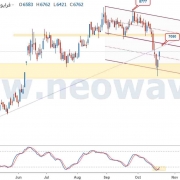(165) New Tips & Hints
The Fed keeps printing money, Gold keeps going up and everyone is worried about inflation. How can you be predicting deflation in the future?
ANSWER:
First, whatever the public is concerned about (or whatever they spend a great deal of time discussing) is usually an issue that has reached its zenith or moved beyond its nadir. Since “inflation” is an important issue of discussion on major news networks, the odds are high the current inflation rate is about as bad as it’s going to get.
Second, U.S. banks operates under a fractional reserve money system. Under such a system, when money is borrowed from a bank, it is created out of nothing (causing an increase in the money supply or “inflation” of the money supply); when it is paid back, it disappears into nothing (causing a decrease in the money supply or “deflation” of the money supply).
The U.S. recently ended a multi-decade credit expansion (i.e., a period of inflation). Since all financial trends run in cycles, what follows a credit expansion (inflation) is a credit contraction (i.e., a period of deflation). The most recent credit contraction began with the stock market decline of 2008 and should last at least 1/4 the time of the expansion period (i.e., 7.5 years).
During credit contractions, debt is paid off (which removes money from circulation), less borrowing occurs (which prevents more money from being put into circulation) and some debts are simply written off (which means the money disappears as if it never existed, creating a decrease in the money supply). As economics 101 teaches us, the more of something you have, the less it is worth. An increasing money supply reduces the value of each dollar in circulation, so it takes more dollars now than in the past to buy the same item. When it takes more dollars to buy something, we say the price has gone up or that inflation has occurred. When the money supply decreases during a credit contraction, each dollar in circulation is worth more. When it takes fewer dollars now than in the past to buy something, we say the price has gone down or that deflation has occurred.
In conclusion, the public’s heightened concern over inflation is probably marking the end of this “inflationary” period. In addition, the credit contraction, starting in 2008, will cause a decrease in the money supply for at least 7.5 years. Those two observations combined suggest the decade from 2011 to 2020 will be characterized by historians as a deflationary period.











دیدگاه خود را ثبت کنید
تمایل دارید در گفتگوها شرکت کنید؟در گفتگو ها شرکت کنید.